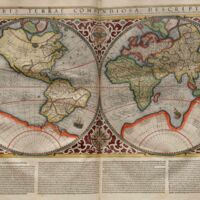Browse Exhibits (2 total)
Global Ingredients: The Diverse Origins of Natural Materials in Ms. Fr. 640

Global Ingredients: The Diverse Origins of Natural Materials in BnF Ms. Fr. 640 is a project that developed out of a seminar, “Making and Knowing in Early Modern Europe: Hands-On History” (Fall 2021) at Columbia University. At the center of the seminar was the anonymous sixteenth-century French artisanal and technical manuscript, BnF Ms. Fr. 640.
The Global Ingredients project intends to serve as a complementary resource to Secrets of Craft and Nature in Renaissance France. A Digital Critical Edition and English Translation of BnF Ms. Fr. 640. The aim of our project is to show the geographic diversity of ingredients used in Ms. Fr. 640 by visualizing their locations of origins through an interactive map, accompanied by texts that describe and further contextualize the ingredients.
Our research traces the history and evolution of ingredients – ranging from natural materials for pigments and animal byproducts for perfumes to substances with medicinal properties – that moved across the Old World (Afro-Eurasia) and the New World (North and South America).
Reflecting the fluidity of the cross-cultural exchanges across geographical boundaries during the early modern period, our selection of ingredients includes long-distance and newly traded materials around the author-practitioner’s time as well as materials brought from shorter distances (i.e., locations outside of Toulouse, France that fall within the borders of modern-day Europe). Some ingredients have complex (and sometimes unclear) origins that involve multiple locations while others have more straightforward provenances. Our curated collection of ingredients is only a start to show the extent of an increasingly globalized world manifested in Ms. Fr. 640.
To accommodate our present-day audience while also working within the available options in our chosen digital mapping tool, we are using the global map with modern national boundaries (National Geographic). Based on this map, we provide an approximation of the geographical origins of the ingredients. For historical reference, we offer a world map nearly contemporaneous to Ms. Fr. 640 (dated to ca. 1580) and produced by the cartographer Rumold Mercator (1545-1599) on the next page.